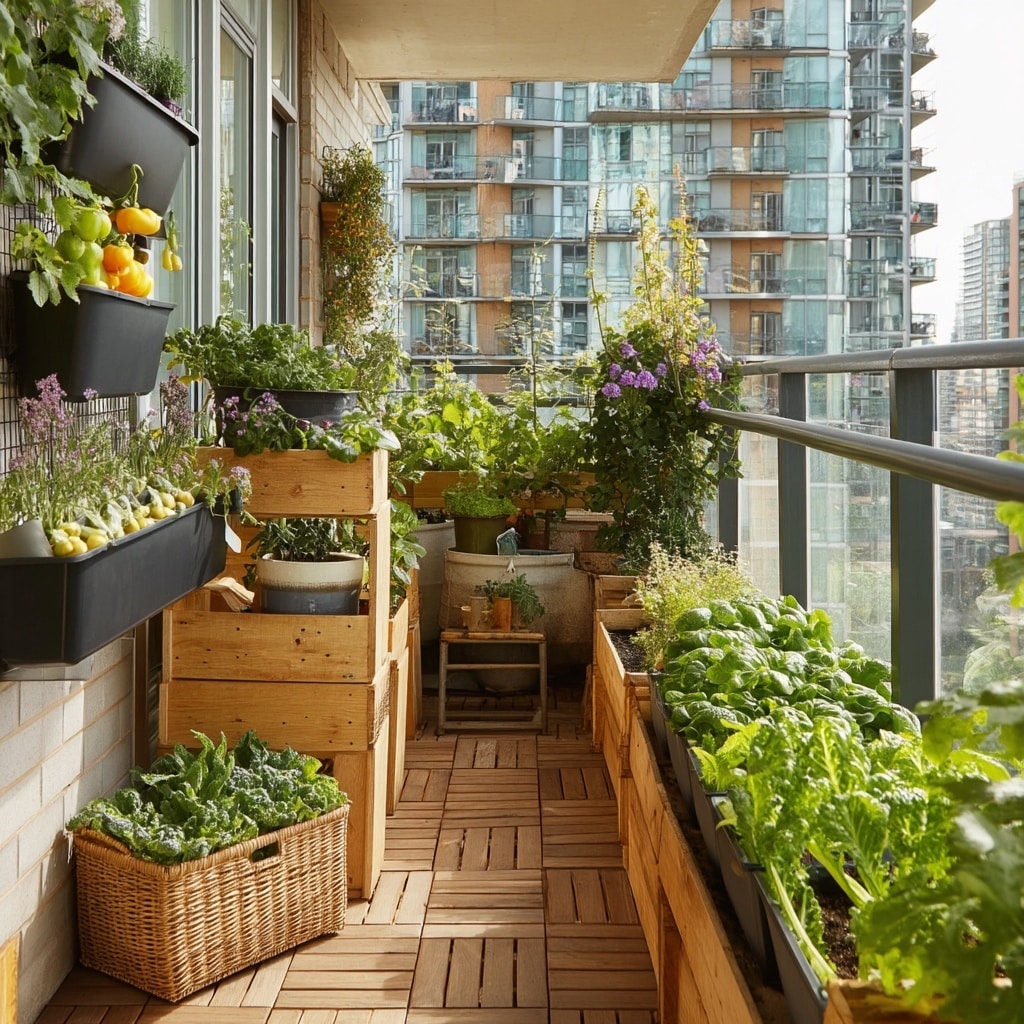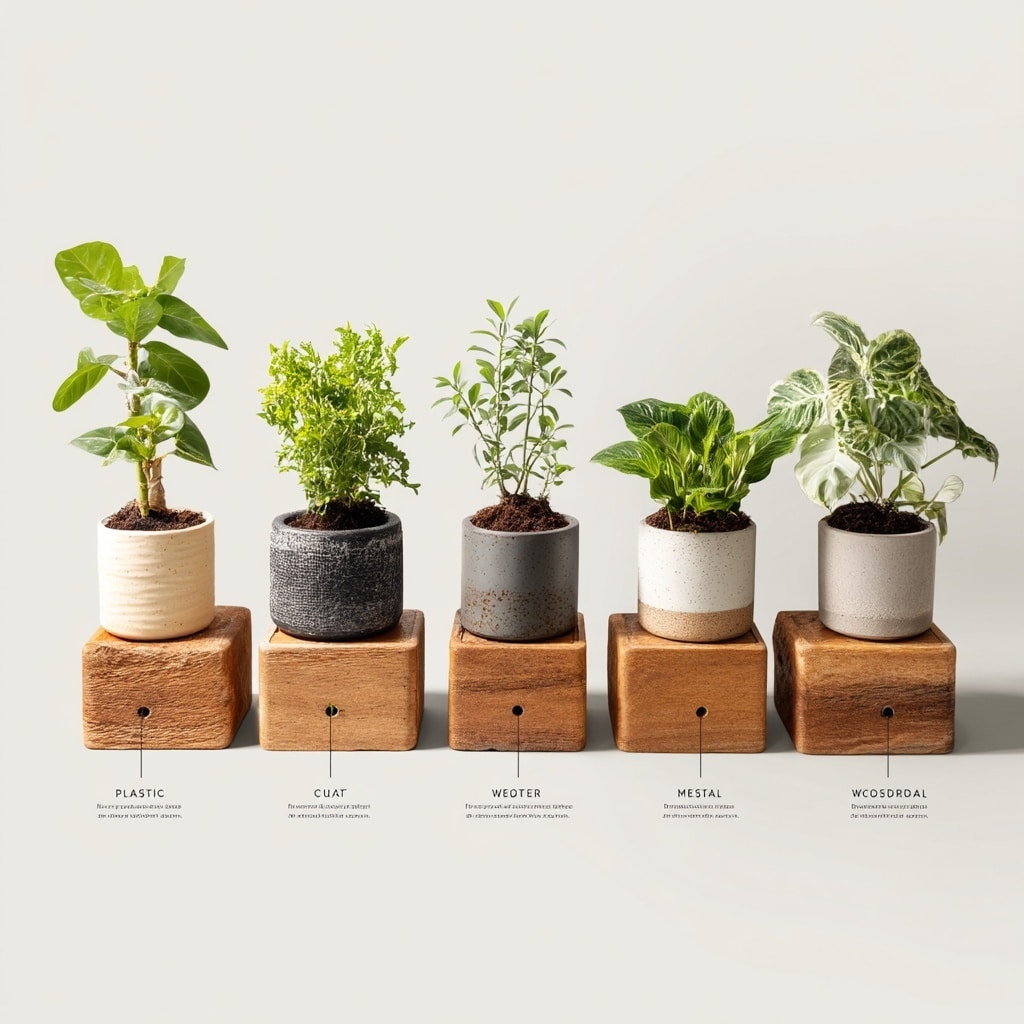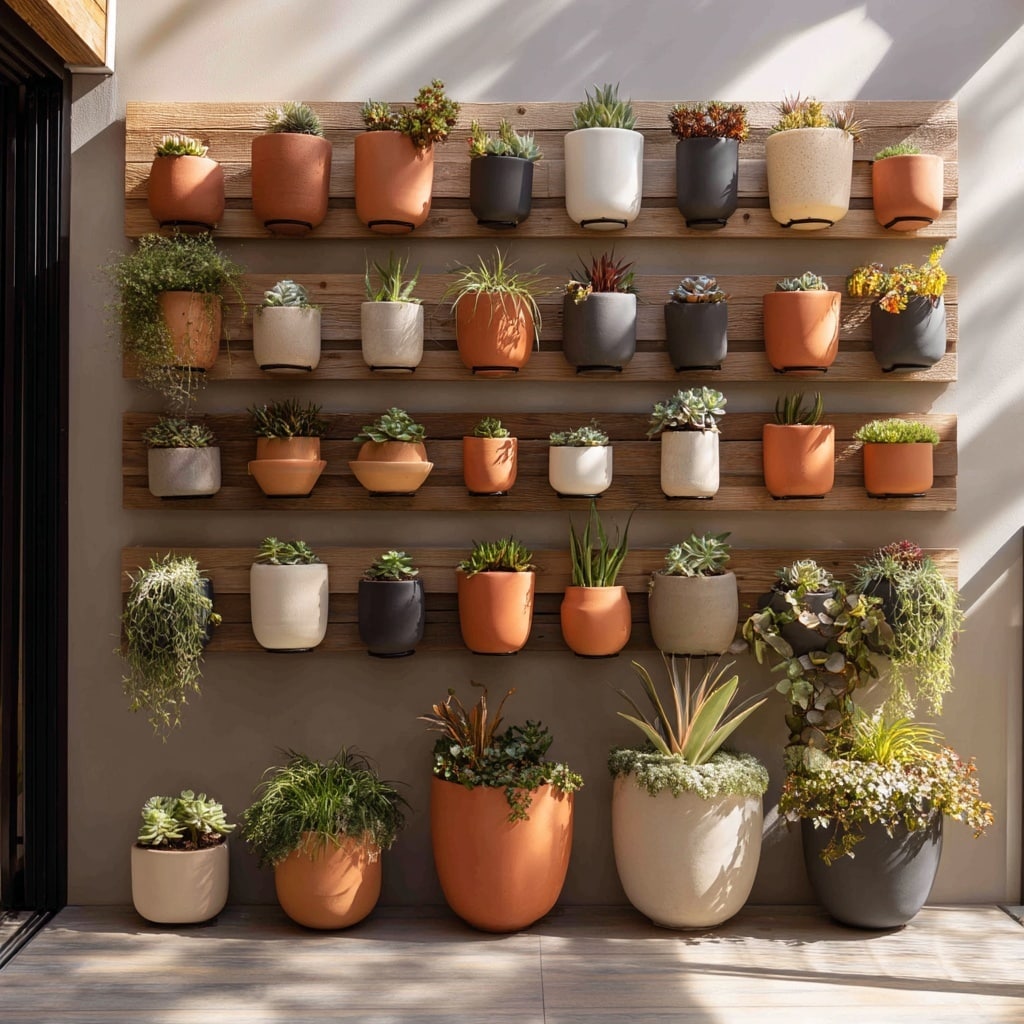A planter is more than just a container for soil—it’s an essential tool for shaping and managing your garden space, whether indoors or out. Whether you have a small balcony, a concrete patio, or a large garden, planters offer flexible growing options for flowers, herbs, vegetables, and even small trees. They come in a wide range of shapes, materials, and styles to suit any gardening need or aesthetic preference.
Table of Contents
Types of Planters
The type of planter you choose can impact both the health of your plants and the style of your space. Here are the most popular types of planters and what makes each one unique.
1. Plastic Planters
Plastic planters are lightweight, affordable, and available in many colors and sizes. They’re a practical choice for beginners and ideal for small balconies or indoor spaces. However, they may not be as durable in extreme weather over time.
2. Ceramic and Terracotta Planters
Terracotta planters are known for their rustic charm and porous nature, allowing air and moisture to pass through to roots. Ceramic options are glazed, offering more color and shine but slightly less breathability. Both types are heavy and stable, perfect for windy spots.
3. Wooden Planters
Wooden planters blend beautifully into natural surroundings. Cedar, redwood, and treated pine are popular choices due to their resistance to rot and insects. Just be sure the planter is lined or treated for long-term use.
4. Metal Planters
Metal planters, such as those made from galvanized steel or aluminum, are modern and stylish. They’re durable and great for contemporary gardens but may heat up in full sun, which can affect plant roots.
5. Concrete and Stone Planters
These heavy-duty planters are built to last and provide excellent insulation for roots. Their weight makes them perfect for permanent installations or large plants like shrubs and small trees.
6. Hanging Planters and Wall Planters
Ideal for vertical gardening, these types of planters help save space and can be used to create stunning floral displays on fences, balconies, or indoor walls.
Benefits of Using Planters

Using a planter offers flexibility and control that traditional in-ground gardening often lacks. Whether you’re working with limited space or trying to protect delicate plants, planters make it easy to create a thriving environment.
1. Ideal for Small Spaces
Living in an apartment or urban area doesn’t mean you have to give up on gardening. A few well-placed planters on a balcony or windowsill can turn any small space into a green retreat.
2. Better Control Over Soil and Drainage
With a planter, you can control the type of soil and how well it drains. This is especially helpful for plants that require specific growing conditions, such as succulents or herbs.
3. Easier Pest and Disease Management
Garden pests often live in the ground. By elevating plants in containers, you reduce the risk of infestations and diseases. It’s easier to monitor and treat individual planters than an entire garden bed.
4. Portability and Flexibility
Planters are mobile. You can move them to follow the sun, avoid frost, or change your garden layout with the seasons. This is a big advantage in areas with unpredictable weather.
5. Decorative Appeal
A well-chosen planter adds charm and character to your home or garden. With endless options in shape, color, and material, planters can double as stylish design elements.
How to Choose the Right Planter

Selecting the right planter depends on your plant’s needs and where you plan to place it. Here’s what to consider before buying.
1. Consider the Plant’s Root System
- Deep-rooted plants like tomatoes need tall, deep planters
- Shallow-rooted herbs can thrive in wide, low containers
Matching planter depth to root structure ensures healthy growth.
2. Drainage Is Non-Negotiable
- Always choose a planter with proper drainage holes
- Add a layer of gravel or pot shards at the bottom to help with water flow
Poor drainage can lead to root rot and stressed plants.
3. Match Size to Growth Potential
- Start with a planter that leaves room for your plant to grow
- A pot that’s too small limits root expansion and nutrient uptake
Going too big too soon, though, can cause overwatering issues.
4. Choose the Right Material
Each material has benefits:
- Plastic: lightweight and affordable
- Ceramic/Terracotta: breathable, ideal for dry-loving plants
- Wood: natural look, good insulation
- Metal: sleek, durable, but can overheat
- Concrete: sturdy and long-lasting, but heavy
Pick a planter that suits both your climate and aesthetic.
5. Factor in Sun and Weather Exposure
If your planter will sit in full sun, choose materials that won’t heat up too quickly. For areas with heavy rain, opt for weather-resistant finishes.
Best Plants for Planters

A wide range of plants thrive in planters, making them perfect for gardeners of all experience levels. Here are some top choices for success in container gardening.
1. Herbs
Herbs are among the easiest plants to grow in planters. Try:
- Basil
- Mint (best kept in a separate planter to prevent spreading)
- Parsley
- Thyme
- Chives
They do well on sunny windowsills, patios, or balconies.
2. Flowers
Brighten up your outdoor space with flowering plants that flourish in planters:
- Petunias
- Geraniums
- Marigolds
- Pansies
- Begonias
Choose varieties that match your sun or shade conditions.
3. Vegetables
Many vegetables can be successfully grown in containers. Good choices include:
- Cherry tomatoes
- Lettuce and spinach
- Radishes
- Peppers
- Carrots (in deep planters)
Use nutrient-rich soil and make sure to water regularly.
4. Succulents and Cacti
For a low-maintenance option, succulents are ideal. Use shallow planters with excellent drainage. Place them in bright, indirect sunlight.
5. Small Shrubs and Dwarf Trees
With a sturdy planter, even larger plants like boxwood, lavender, or dwarf citrus trees can grow well. Just be sure to choose a size that allows the roots to expand.
Conclusion

A planter is one of the most versatile tools in any gardener’s toolkit. Whether you’re growing herbs in a kitchen window or cultivating shrubs on a patio, planters give you the freedom to garden anywhere. By choosing the right type, size, and material, you’ll give your plants the best chance to thrive—no matter your space.




